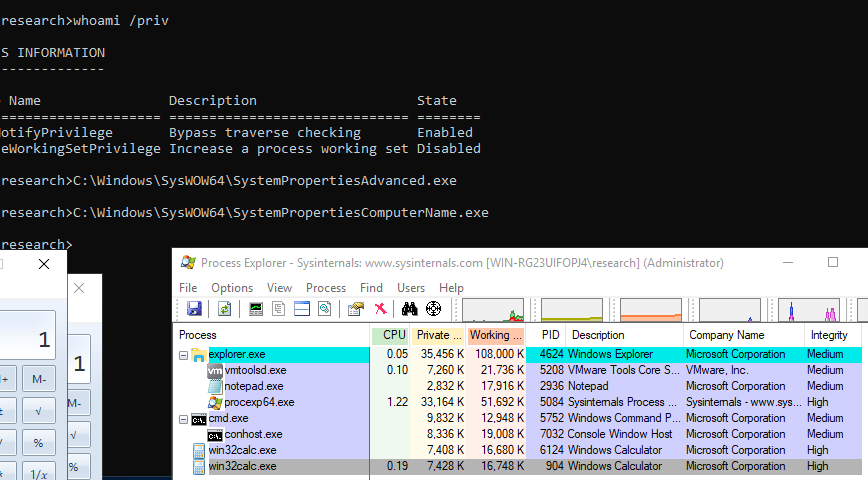SystemPropertiesAdvanced.exe DLL Hijacking UAC Bypass

Auto-elevating binaries are a good source of bypasses for Windows User Account Control (UAC). “SystemPropertiesAdvanced.exe” and other SystemProperties* binaries can be used to bypass UAC on Windows Server 2019 via DLL hijacking.
findstr can used to examine the auto-elevate behaviour within the embedded manifest:
findstr /C:"<autoElevate>true" C:\Windows\SysWOW64\SystemPropertiesAdvanced.exe

Alternatively, sigcheck can be used to dump the manifest.
sigcheck.exe -m C:\Windows\SysWOW64\SystemPropertiesAdvanced.exe

After setting the Procmon filter, the auto-elevating SysWOW64 binaries are executed.

This results in a fair amount of output, and so additional Procmon filters to exclude DLL paths starting with “C:\Windows” and “C:\Program Files” can be applied. Of note, the binary “C:\Windows\SysWOW64\SystemPropertiesAdvanced.exe” attempts to load the DLL “srrstr.dll” from the WindowsApps folder. As this folder is included in the PATH variable, Windows will search this location for the required DLL.


This folder is writeable by unprivileged users, in order to allow installation of Apps from the Microsoft Store.
A DLL to spawn calc.exe is crafted (tested with DllMain) and saved to the WindowsApps folder. “SystemPropertiesAdvanced.exe” is executed again (from a Medium Integrity Level command prompt), and calc.exe is spawned as a High Integrity Level process.

In testing, this DLL hijack / UAC bypass also affects other SysWOW64 SystemProperties* binaries:
SystemPropertiesComputerName.exe
SystemPropertiesHardware.exe
SystemPropertiesProtection.exe
SystemPropertiesRemote.exe
Setting UAC policy to “Always Notify” mitigates this issue.
Note: Microsoft fixed this issue in Windows 10 version 1903 (build 18362).